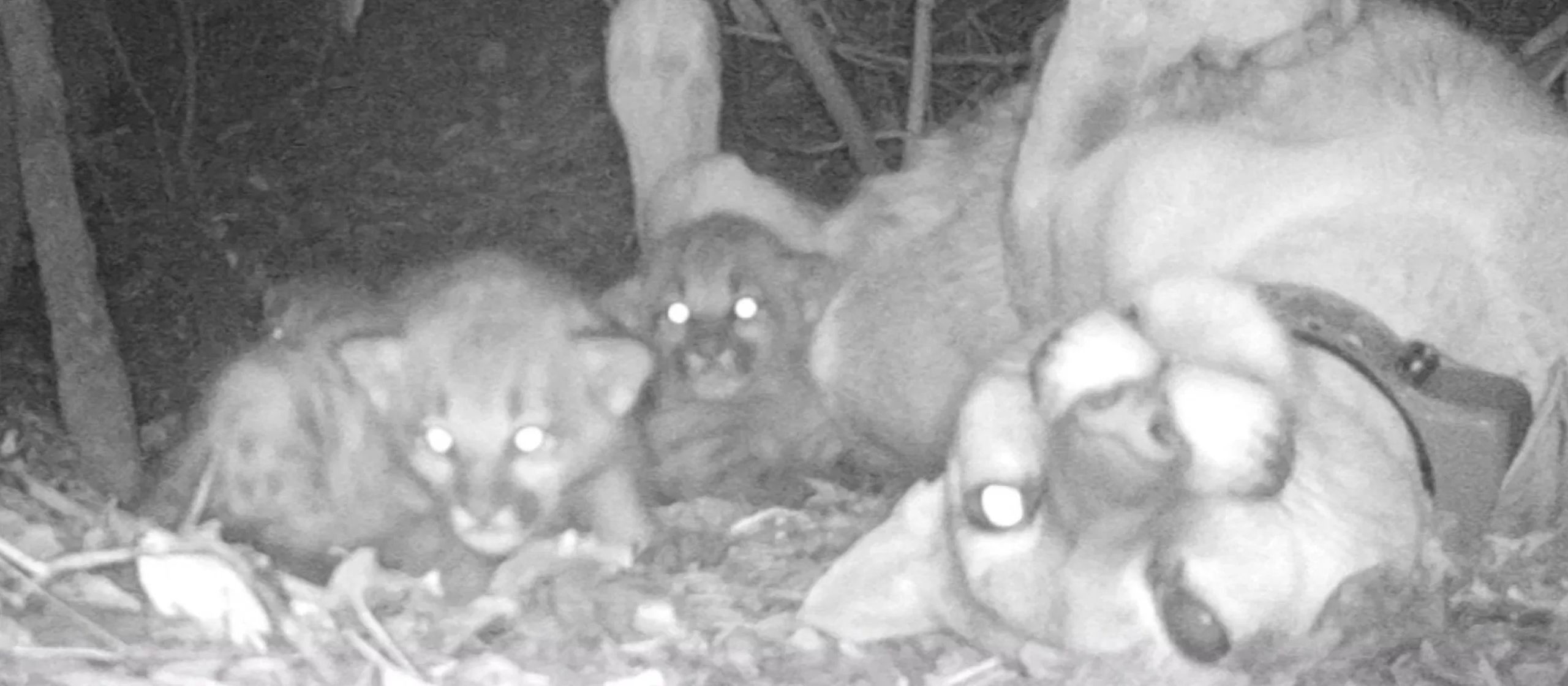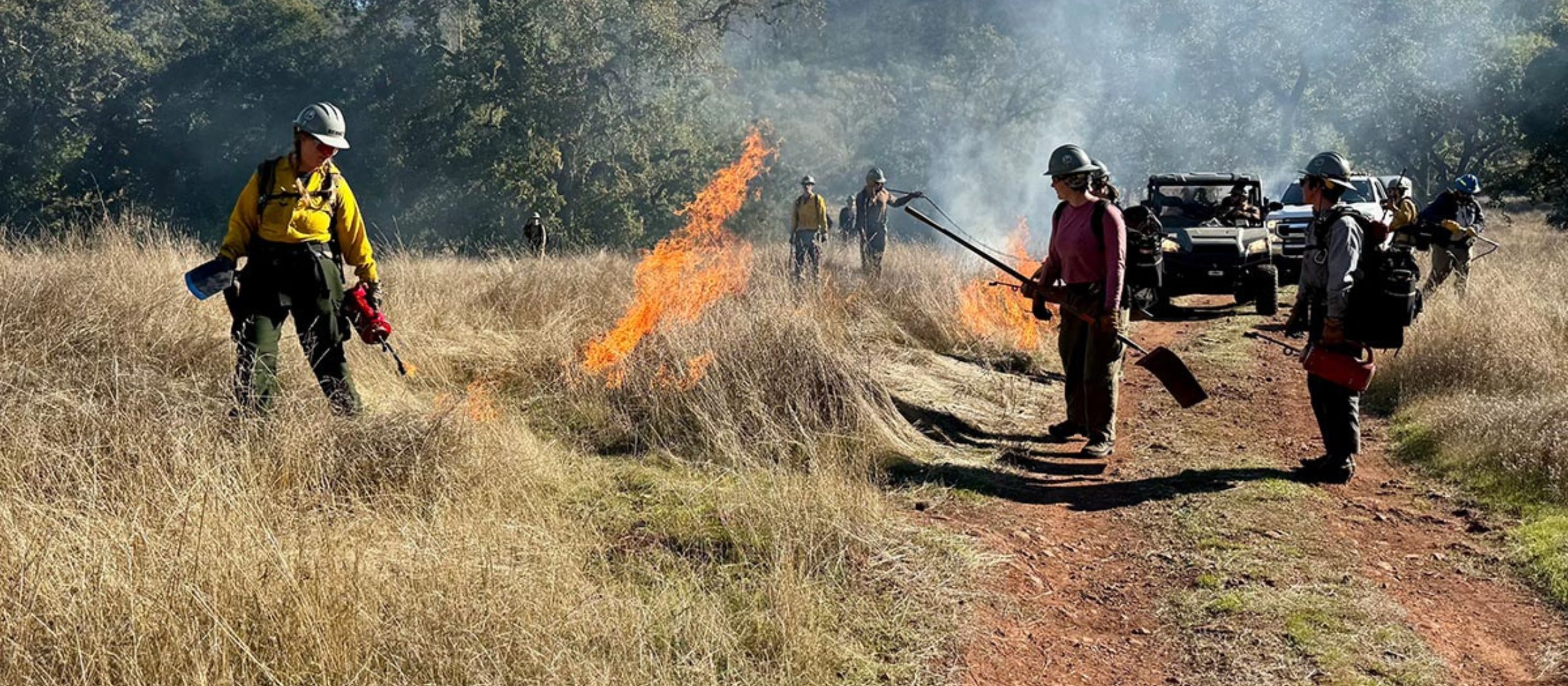|
Getting your Trinity Audio player ready...
|
Disappointing news
Readers following our Living with Lions updates might recall two things about mountain lion P39: she was blind in one eye and none of her first three litters we monitored lived over six months of age. As we’ve shared about P39 through the years, we’ve been rooting for the survival of her cubs. Things were going quite well with her fourth and most recent litter. Sadly, we were informed that she was shot and killed in August by a landowner while allegedly preying on livestock.
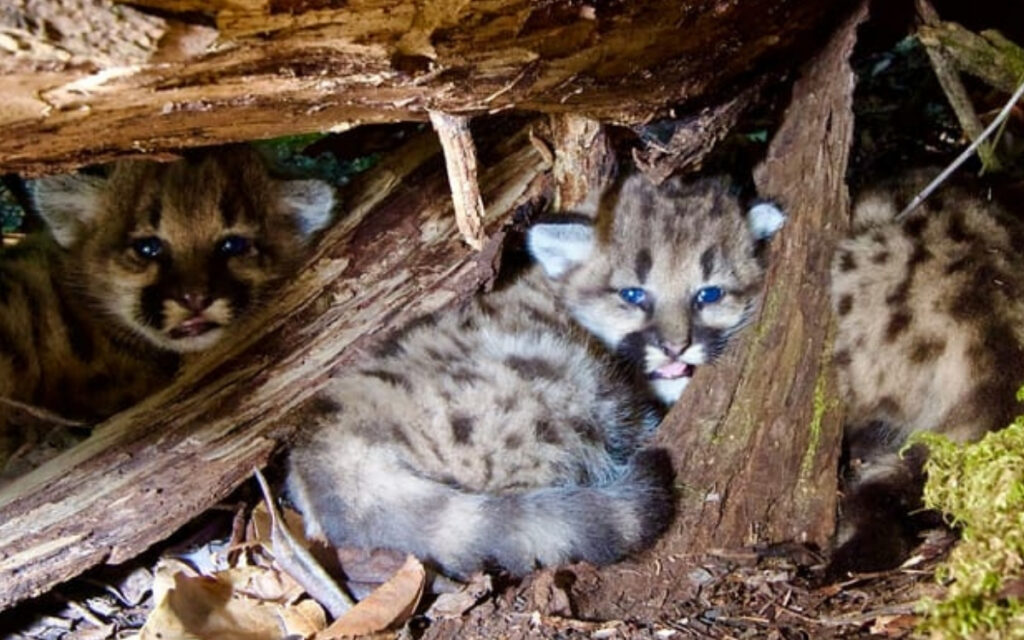
P39’s story
“For mountain lions living in the North Bay, the story of Hillcrest (P39) is not an uncommon one. The challenges of life in this complex, human-dominated landscape, make for a difficult existence for these far-ranging cats.” – Dr. Quinton Martins, Living with Lions principal investigator
The landowner of the property where P39 was collared in 2022 named her “Hillcrest.” The stories of mountain lions in the Living with Lions study are compiled bit by bit through thousands of accurate GPS locations represented by dots and lines on maps, biological measurements and samples, as well as trail camera photos. As a healthy female of reproducing age, the data from tracking West County-based P39 has helped us understand, not only, her movements and diet, but has provided sobering insights into the low survival rates of mountain lion cubs in the North Bay.
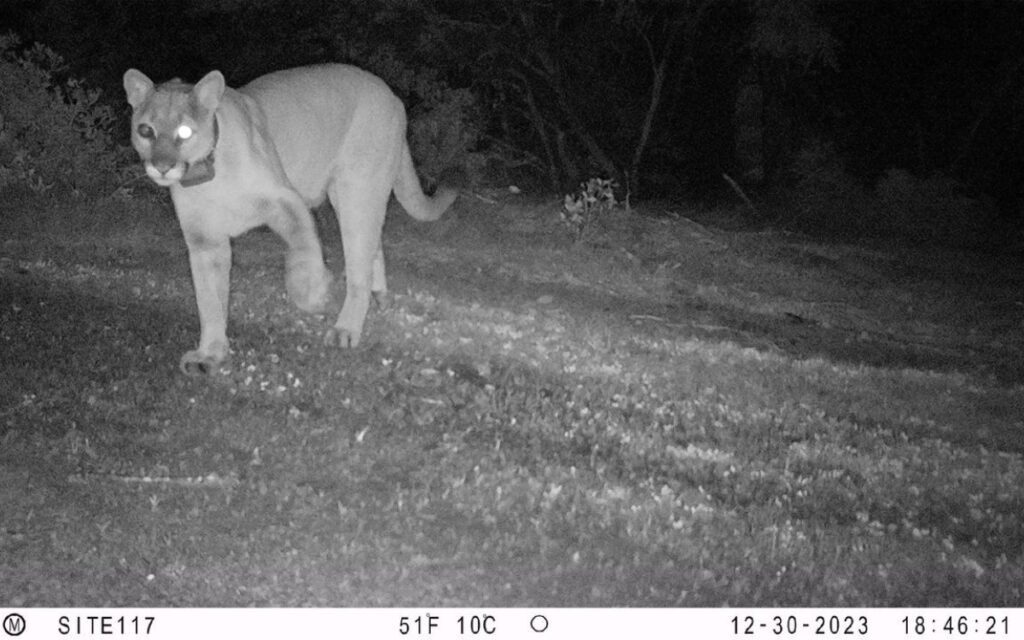
13 cubs
Between 2022 and early 2024, we observed P39 rearing three consecutive litters of kittens. All 10 kittens perished from illness or injury before reaching the age of dispersal. One litter of three was killed by a predator, which we suspected to be another female mountain lion.
In the summer of 2024, P39 had her final litter of three kittens. Unfortunately, P39’s GPS collar stopped transmitting in January 2025. With the assistance of trail cameras, Martins was able to confirm that two of her cubs managed to survive until August 2025 which meant the cubs were about 13 months old — old enough to disperse. We were hopeful that at least one cub would live to go out on its own.

Hillcrest’s end
Martins received the news from California Department of Fish and Wildlife in September 2025 that P39 was shot and killed on August 19 during a suspected livestock depredation. Martins also received news from another source that one of the cubs was also shot and killed in the same incident, but this information has not been confirmed.
Though in certain circumstances it is lawful to kill a mountain lion caught in the act of preying on pets or livestock, it doesn’t solve the underlying problem. Killing an adult territorial lion leaves a vacant territory which is almost certainly going to be filled by another lion, or often by more than one lion. The risk to vulnerable livestock remains. Only adequate protection for livestock and domestic animals will solve the issue of depredation. See our guide for coexistence with mountain lions for more information.

The end of the story?
About a month after P39 was shot, Martins learned that a sheep had been killed on the same property where P39 and her cubs had killed livestock shortly before her death. Martins and his team were able to capture and collar the new lion known as P51. Because of P51’s young age and location, it may be that he is P39’s only surviving offspring. Genetic tests from P51’s capture will be able to confirm this.
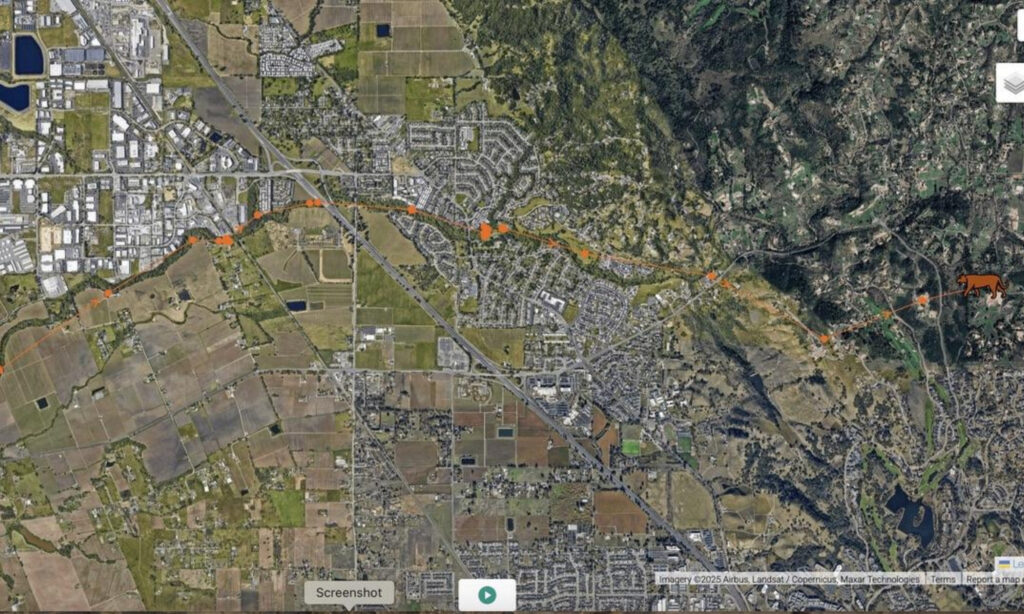
A new beginning
Just as GPS tracking a female mountain lion provides invaluable information, following a juvenile dispersing mountain lion can reveal significant and sometimes astonishing findings. Initial data show that P51 is on a fascinating trajectory — as a young lion trying to stay alive and out of trouble until he is old enough to challenge another male for a home to call his own.
Tracking data has shown that from where he was collared near the Laguna de Santa Rosa, P51 traveled north and crossed the Russian River. He quickly back tracked and headed east, following Mark West Creek. Remarkably, he crossed under Highway 101 and navigated the Mark West Creek corridor through the northeast Santa Rosa neighborhood of Fountaingrove.
As a young male mountain lion, P51 will try to utilize territory with sufficient prey, water, and cover, but with a little pressure from the adult, resident mountain lions this may lead to the use of habitat that is not ideal. If P51 survives long enough to establish his own territory, his range might cover 150 –250 square miles.
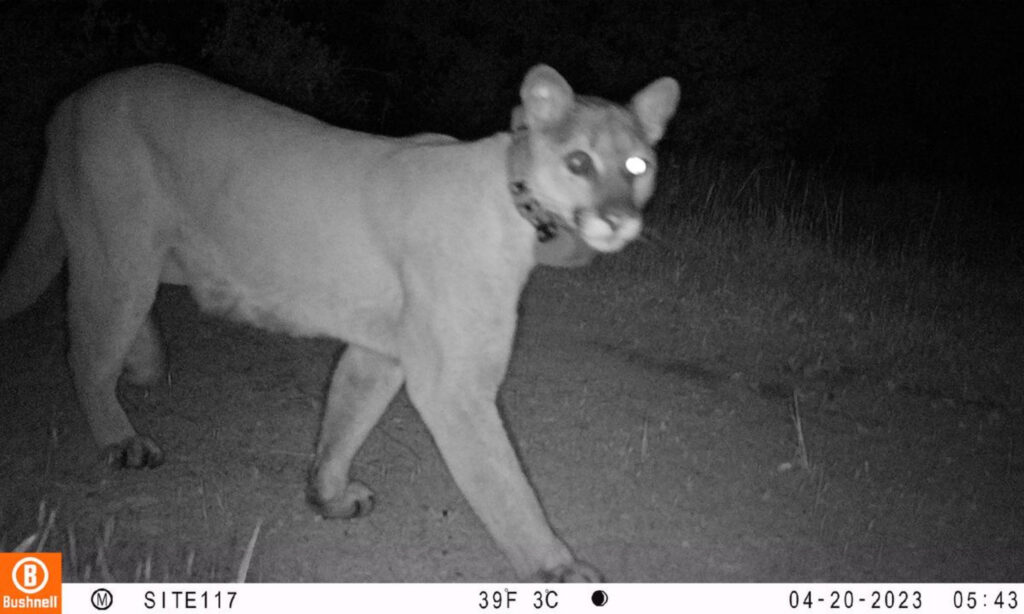
“We persevere in our work…”
P51’s story is just beginning in the Living with Lions study. It goes without saying that our hearts get wrapped up in the tenuous lives of these magnificent animals. Following the ups and the downs of their stories allows us to not only better understand factors influencing North Bay mountain lion survival but also help us pinpoint where our efforts are needed most.
“We persevere in our work to learn more about these enigmatic predators, finding ways to mitigate the human-induced factors that threaten their existence, trying to give them a fair chance of survival where they can contribute to the integrity of this ecosystem while reminding us that we live in a place with fantastic wildlife.” – Dr. Quinton Martins, Living with Lions principal investigator
Your support of Living with Lions will have a significant impact in studying our region’s mountain lions to promote ecosystem conservation throughout our region. Donate today >


